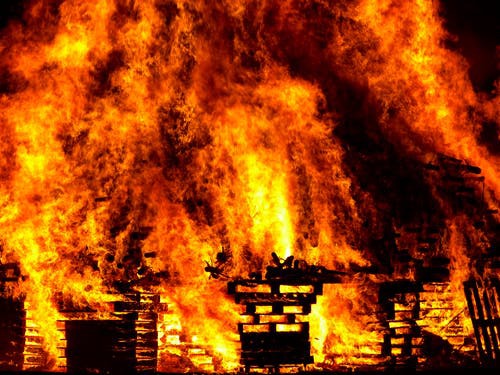What Equipment Is Used in Water Damage Restoration?

When faced with water damage in your home or business, it’s crucial to know about the tools of the trade that can help restore your space to its former state. The equipment used in water damage restoration is specialized and designed to efficiently remove water, dry out areas, dehumidify spaces, and prevent the spread of contaminants. This article will cover the essential equipment professionals use to manage and mitigate water damage.
1. Detection and Diagnostic Tools
Moisture Meters
One of the first steps in water damage restoration is to assess the extent of the moisture in the affected areas. Moisture meters are vital for this purpose. They come in different types, including pin-type, pinless, or infrared, each suitable for different materials and situations.
Thermal Imaging Cameras
Thermal imaging cameras play a critical role in detecting water behind walls, above ceilings, or under floors without causing any damage to the structures. These cameras help identify the water sources and the affected areas that are not visible to the naked eye.
2. Water Extraction Equipment
After assessing moisture levels and identifying all affected areas, the next step usually involves water extraction. Here are some critical pieces of equipment used:
-
Submersible Pumps: Used for continuous pumping of high-level water.
-
Truck-Mounted Vacuum Units: Ideal for efficient extraction of large amounts of water.
-
Portable Wet/Dry Vacuums: These are useful for accessing harder-to-reach areas.
Properly extracting water is a pivotal stage and prepares the area for drying and dehumidification. Awareness of all these tools and processes used in water damage restoration can give a greater peace of mind. Knowing what to expect from professional water damage cleaning services can simplify the process and prepare you for recovery if disaster strikes.
3. Drying and Dehumidification Equipment
After most of the water is extracted, the next focus is on thoroughly drying out the affected areas to prevent mold and further water damage.
-
Air Movers: Also known as blowers, they are powerful fans that encourage air circulation to speed up the drying process.
-
Dehumidifiers: Essential for removing moisture from the air and surrounding materials, thus helping to stabilize the environment and preventing mold growth.
4. Specialized Drying Systems
Desiccant Dehumidifiers
Desiccant dehumidifiers are used for certain types of materials like hardwood and deep plaster. They work by passing air over a silica gel, which absorbs moisture from the air. These are particularly effective in environments with lower temperatures and lower humidity.
Injectidry Systems
These systems are great for drying out areas that are tricky to access. Using a series of hoses, they forcibly push air into cavities and areas within walls or under flooring, ensuring thorough moisture removal.
5. Sanitizing and Cleaning Agents
Once the area is dry, sanitization is your next step. Various cleaning agents and equipment are needed to ensure the area is free from contaminants and inhibit any mold growth.
Antimicrobials and Disinfectants
These are used to clean and sanitize all surfaces, prevent mold and mildew, and eliminate bacteria that might cause health issues. It’s essential in areas exposed to potentially contaminated water or sewage.
Air Scrubbers
Air scrubbers are crucial to remove airborne particles and pathogens. They work by drawing in air, passing it through filters to trap contaminants, and recirculating the clean air back into space.
6. Final Restoration Steps
Once the drying, dehumidification, and sanitizing phases are complete, water damage restoration professionals typically move on to the final restoration steps. These steps are crucial for returning the property to its pre-damage condition and may include the following tasks:
-
Final restoration after drying, dehumidification, and sanitizing involves repair, rebuilding, and returning the property to its original state.
-
Repair and rebuilding include reconstructing damaged structures such as walls, floors, and ceilings using carpentry, drywall, and flooring techniques.
-
Painting and finishing follow structural repairs to ensure the new surfaces blend seamlessly with the original areas, using professional painters.
-
Specialized cleaning techniques like steam cleaning restore salvageable carpets, furniture, and fabric items.
-
Using technologies like ozone generators, odor removal is crucial to eliminating musty odors, especially if mold is present.
-
A final inspection and testing ensure all restoration meets industry standards, verifying air quality and moisture removal and preventing future issues.
Monitoring Progress and Evaluation
Throughout the water damage restoration process, continuous monitoring is necessary to ensure the environment is returning to its normal state. Hygrometers, or humidity gauges, are frequently used to measure the moisture content in the air to confirm that the area is drying correctly and efficiently.
Air movers, dehumidifiers, and hygrometers are critical for effective water damage restoration. However, for complete restoration and peace of mind, experts like PuroClean disaster cleanup often employ advanced strategies and tools to ensure a thorough job.
Addressing Mold After Water Damage
Following any water incident, the mold remediation process is a significant concern. Effective water damage restoration hinges on removing the water and ensuring that mold does not find a hospitable environment to grow.
Final Thoughts
Water damage can be a devastating experience, but with the proper knowledge and tools, restoration doesn’t have to be daunting. This comprehensive look at the equipment and processes involved in water damage restoration provides insight into how professionals tackle this complex issue, ensuring the safety and swift recovery of affected spaces.

